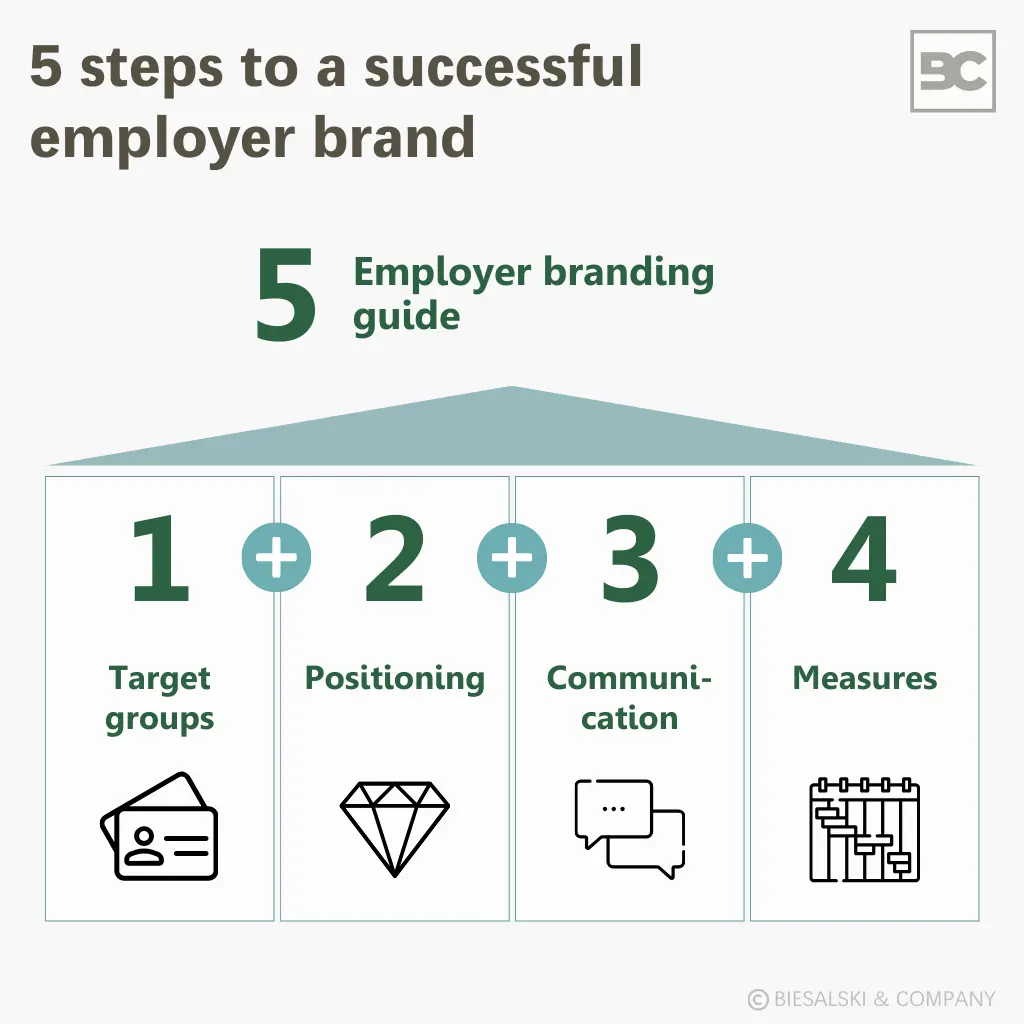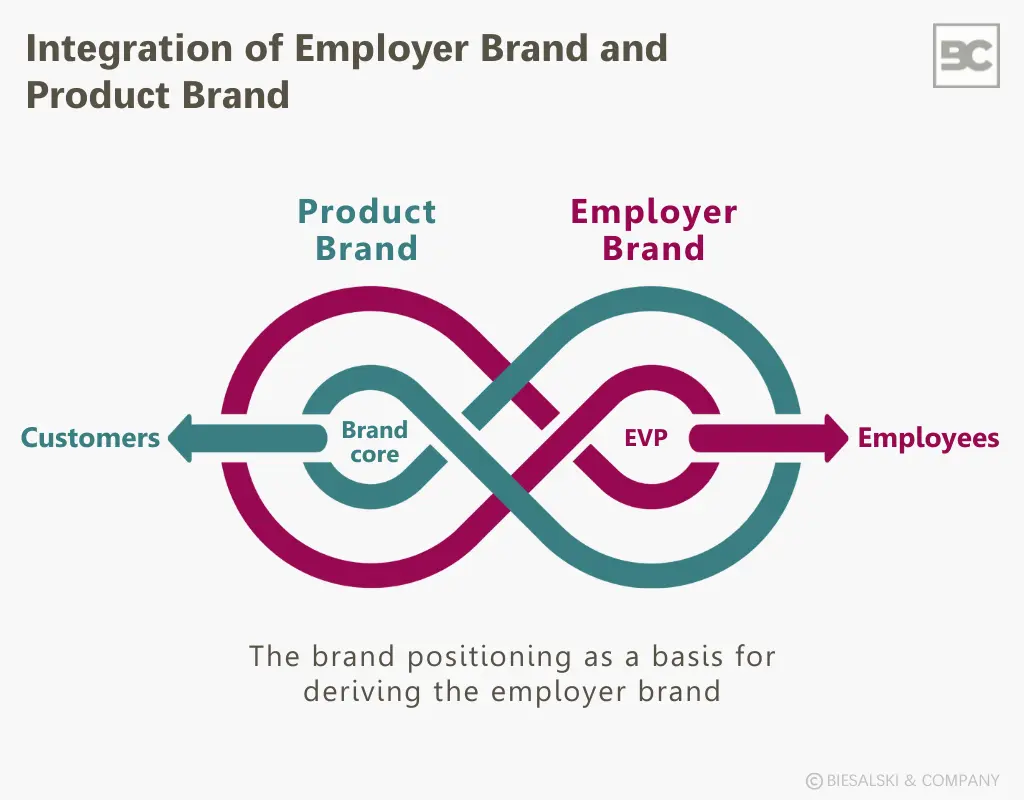Employer Branding Strategy
The Art to Inspiring Talent
Employer Branding Analysis
Employer Branding Strategy
Employer Branding Training
Employer Branding Roll-out
What is an Employer Branding Strategy?
A well-thought-out employer branding strategy is the sustainable key to attracting and retaining talent. Especially in an increasingly competitive job market, the importance of a strong employer branding strategy is becoming ever more critical for companies.
An employer branding strategy not only enhances the company’s image internally and externally but also facilitates the recruitment of suitable talent and gradually increases employee satisfaction.
Your Benefit
An employer branding strategy creates a consistent brand experience across all relevant touchpoints with the target applicant groups.
An employer branding strategy enhances your presence and reputation as an employer within the relevant target applicant groups.
An employer branding strategy enables targeted management and transparency regarding the success of your employer brand.
A relevant, credible, and distinctive approach to candidates enhances the efficiency of applicant communication.
Targeted measures to implement the employer brand positioning, focusing on brand communication and employee behaviour.
Together with smoothly and efficiently operating HR and recruiting processes, attracting qualified employees who align with the brand and company becomes easier.
Motivating and engaging existing employees with the employer reduces turnover rates. This enables you to meet your staffing needs in the long term while simultaneously saving costs.
A strong employer brand strengthens your position in the competitive landscape and gives you a significant advantage in the ‘war for talent.’
What we offer
What we offer
These five essential steps form the foundation for developing your successful employer branding strategy:

1. Target Groups
First, the relevant target groups—current or potential employees—are defined, with their needs and requirements placed at the core of the process. Using existing insights and/or an employee survey, the key needs, desires, requirements, and touchpoints along the employee journey are identified. These elements are assessed from the employees’ perspective, focusing on factors that influence their decision for or against your company as a future employer.
2. Positioning
Building on this, the positioning of your employer brand – the Employer Value Proposition (EVP) – is defined in alignment with your corporate brand. As with any brand positioning, the three quality criteria of relevance, uniqueness, and credibility are strictly adhered to.
3. Communication
The core benefits are then translated into communication messages and specific arguments to effectively address the respective target groups.
4. Measures
At this stage, the positioning of the employer brand exists only on paper. To ensure long-term success, a bridge to implementation is needed. This is achieved by identifying the “Moments of Truth” – the key touchpoints along the employee journey. For these critical moments, not only general communication or behaviour guidelines are developed. The goal is to create specific measures for brand-supportive behaviour as well as for aligned communication, processes, and systems.
5. Employer Branding Guide
All content is consolidated into the Employer Branding Guide. The guide is a practical toolbox designed to support the implementation of the employer brand in communication and behaviour, offering flexible, reusable solutions.
Additionally, the Employer Branding Steering System provides a tool to measure implementation success through concrete Key Performance Indicators (KPIs), such as the number of incoming applications, hiring rate, turnover rate, reputation, and metrics related to touchpoint perception.
Seamless Integration with the Performance Brand is Essential
The close integration of the employer brand with the performance brand is indispensable. It delivers more than just a consistent brand presence – it creates a genuine competitive advantage.
The performance brand communicates the value proposition to customers (key concept: brand positioning), while the employer brand focuses on addressing the specific needs of current and prospective employees (key concept: employer value proposition). Authenticity and consistency are critical in this process. Through integration, both customers and employees experience a cohesive and trustworthy brand that exceeds expectations.
External talent perceives this positively, enhancing your market position and fostering loyalty. Consistently implementing brand values across all areas strengthens employee retention and motivation.
The result is a brand that shines from the inside out, ensuring your sustainable competitiveness – a crucial factor for your future market position, as the authentic representation of the employer brand directly influences purchasing decisions.

This creates a cohesive overall image that fosters trust among both customers and employees – a key factor for sustainable success.
Why you should work with us
Contact me!
Jürgen Messmer
SENIOR MANAGER


